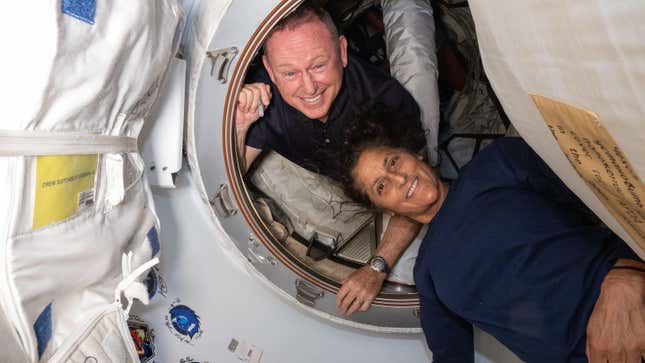
On Friday NASA astronauts Butch Wilmore and Suni Williams had their first news conference from the International Space Station since the Boeing Starliner returned to Earth empty last week. While the pair wouldn’t discuss the troubled spacecraft in detail, they made it clear that NASA and themselves weren’t comfortable with going back on Starliner when it needed to depart.
The press conference opened with Wilmore and Williams appreciative for the well-wishes sent during their extended multi-month stay in space. The retired Navy captains cited that test flights are unpredictable and shifting timetables were something they and their families were used to during their military deployments.
The tone was slightly more defensive when the topic shifted toward why they aren’t returning to Earth until next year, the Boeing Starliner. When asked what could Boeing have done differently in Starliner’s development, Wilmore emphasized he can’t go into all the details now and answered:
I can tell ya, when you push the edge of the envelope and you do things with spacecraft that have never been done before, just like Starliner, you’re gonna find some things. And in this case, we found some things that we just could not get comfortable with putting us back in the Starliner when we had other options.
There are many cases in the past where there have not been other options. We were very fortunate that we have the space station, and we had the option to stay and we had the option to come back a different way if that is what the data showed. I think the data could have gotten there. We could have gotten to the point where we could have returned on Starliner, but we just simply ran out of time.
To quickly recap everything publicly known, the Boeing Starliner had six of its 28 thrusters fail during its approach with the ISS. NASA extended the eight-day mission for months as engineers attempted to identify the issue and create a solution. Testing revealed that a Teflon valve coating was heating up, melting and blocking the thrusters. The problem continued even when the Starliner returned autonomously, and the guidance system also blacked out temporarily during re-entry.
Wilmore stated that changes will be made to the Starliner, but questions remain about whether NASA will still use the Boeing spacecraft for a scheduled August 2025 mission. The agency double-booked the launch with a SpaceX mission in case the Starliner couldn’t be used.

